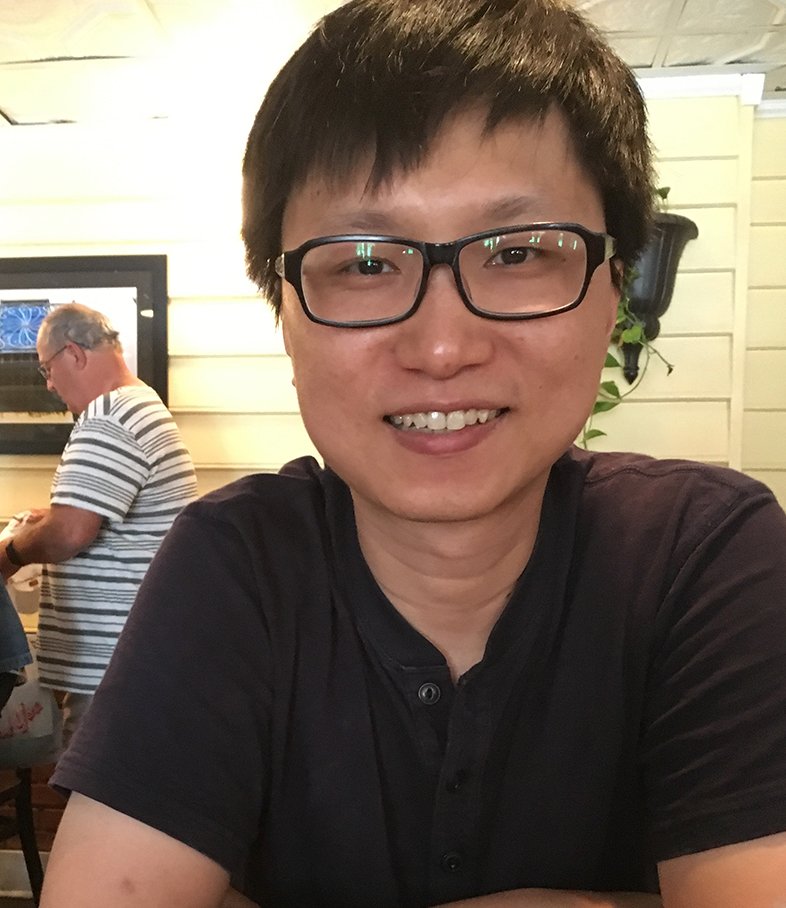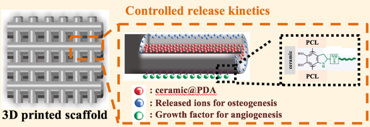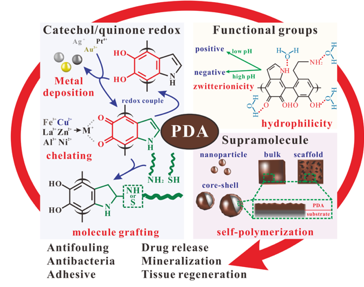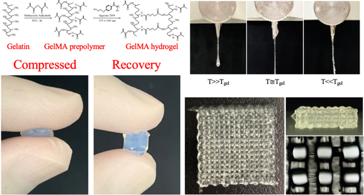© 2020 Chine Medical University Hospital All rights reserved


Chia-Che Ho Department of Bioinformatics and Medical Engineering Assistant Professor
Education
Doctor: Institute of Oral Science, Chung Shan Medical UniversityMaster: Institute of Oral Biology and Materials Science, Chung Shan Medical University
Bachelor: Department of Biomedical Engineering, I-Shou University
Research expertise

The 3D printed scaffolds are mainly manufactured through successful layer-by-layer fusion of printable and biocompatible biomaterials for preparation of implantable grafts with porous structures and the ability to guide tissue regeneration. Despite the existing achievements of 3D printing techniques in bone tissue engineering, limited amount of “inks” with acceptable printability is available. A facile strategy to broaden candidates is incorporating osteoconductive bioceramics into printable thermoplastic polymers. There are still burdens which hinder the translation of the composites from bench-side to bed-side due to the high viscosity and insufficient mechanical strength of the composites. Thus, our laboratory has developed a simple and effective surface modification strategy that can enhance the dispersion of bioceramic particles in biopolymers, consequently retards the viscosity and optimizes the mechanical strength of the printed composites for improving its applicability in bone tissue engineering.

Polydopamine has a variety of astounding properties, making it a novel biomaterial and attracting much attention in recent years. Depending on the surface characteristics of substrates, it can be used to change the chemical properties of the substrate surface through spontaneous non-covalent bonding or covalent bonding with the surface of substrates. It can also form nanoparticles with a diameter of about 100 nm during the polymerization process. In addition, polydopamine itself can also be used as a platform of post-decoration for immobilizing noble metals, ceramics, or biomolecules on the surface of the substrate without using chemical reagents. This not only overcomes the dilemma that existing biomaterials cannot meet clinical needs due to their inherent natures, but also improves the functionality of a single material for clinical use. Regarding this, our research theme dedicates efforts to investigate the unrevealed properties of polydopamine for establishment of basic knowledges on polydopamine and explore its uses in biomaterial science and tissue engineering.

Recent advances in bioprinting technology has greatly promoted the progress of tissue engineering and regenerative medicine. In this realm, the physicochemical properties of the hydrogels play important roles in determining the growth and maturation of cells encapsulated in the printed products. Hence, our group has developed a photocurable semi-synthetic biopolymer hydrogel system. In addition to having good biocompatibility and biodegradability, this system exhibits reversible temperature-sensitive sol-gel conversion capabilities, making it has superior printability. Moreover, our research theme is also focusing on evaluation of its feasibility in application of tissue engineering. It is expected that the hydrogel system could be useful for providing a robust manufacturing option in preparation of three-dimensional constructs with structures and functions equivalent to native tissues .
Paper
- Kao CT, Chen YJ, Huang TH, Lin YH, Hsu TT, Ho CC. Assessment of the release profile of fibroblast growth factor-2-load mesoporous calcium silicate/poly-ε-caprolactone 3D scaffold for regulate bone regeneration. Processes, 2020;8:1249. (IF = 2.753; Ranking = 40.6%) (Corresponding author)
- Chen YW, Lu CH, Shen MH, Lin SY, Chen CH, Chuang CK, Ho CC. In vitro evaluation of the hyaluronic acid/alginate composite powder for topical haemostasis and wound healing. International Wound Journal, 2020;17:394. (IF = 2.825; Ranking = 32.4%) (Corresponding author)
- Huang TH, Kao CT, Shen YF, Lin YT, Liu YT, Yen SY, Ho CC. Substitutions of strontium in bioactive calcium silicate bone cements stimulate osteogenic differentiation in human mesenchymal stem cells. Journal of Materials Science: Materials in Medicine, 2019;30:68. (IF = 2.448; Ranking = 37.2%) (Corresponding author)
- Tu MG, Ho CC, Hsu TT, Huang TH, Lin MJ, Shie MY. Mineral Trioxide Aggregate with mussel-inspired surface nanolayers for stimulating odontogenic differentiation of dental pulp cells. Journal of Endodontic Journal, 2018;44:963. (IF = 2.886; Ranking = 14.3%) (First author)
- Ho CC, Fang HY, Wang B, Huang TH, Shie MY. The effects of Biodentine/polycaprolactone three‐dimensional‐scaffold with odontogenesis properties on human dental pulp cells. International Endodontic Journal, 2018;51:e291. (IF = 3.015; Ranking = 13.2%) (First author)
Research team




